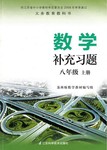题目内容
【题目】阅读下面短文,根据其内容写一篇60词左右的内容概要。
In a small village, the parents of a little boy were very depressed due to his bad temper(脾气). The boy used to get angry very easily and hurt others with his words. While he forgot what he spoke in anger, his friends and neighbors avoided him.
His mother and father tried many ways to make him give up his anger and develop kindness. Unfortunately, all their attempts failed. Finally, the boy’s father came up with an idea.
One day, his father gave him a huge bag of nails, asking him to hammer one nail to the fence every time he lost his temper. The little boy found it funny and accepted what his father had said.
His anger drove him to hammer 30 nails into the fence on the first day! Over the next few days, the little boy found it very difficult to hammer the nails into the fence and decided to control his temper.
Gradually, the number of nails hammered into the fence was reduced and the day arrived when he hammered none!
Now, his father told him to remove the nails every day as he had controlled his anger. Several days passed and the boy was able to pull out most of the nails from the fence.
The father appreciated him and asked him, pointing to one of the holes, “What do you see there?”
The boy replied, “A hole in the fence?”
He told the boy, “The nails were your bad temper and they were hammered into people. You can remove the nails but still see the holes in the fence. The fence never looks the same! It has scars all over! Your bad temper and anger were like that! Use words for good. Use them to show your heart!”
_____________________________________________________________________________
_____________________________________________________________________________
_____________________________________________________________________________
_____________________________________________________________________________
_____________________________________________________________________________
_____________________________________________________________________________
_____________________________________________________________________________
_____________________________________________________________________________
_____________________________________________________________________________
_____________________________________________________________________________
【答案】
There was a little bad-tempered boy in a small village(要点一). To help him give up his anger, his father asked him to hammer a nail into a fence whenever he became angry (要点二)and remove one whenever he didn’t lose his temper(要点三). Gradually, the boy could control his temper(要点四). This story tells us just like holes in a fence, a bad temper and anger can hurt others forever(要点五).
【解析】略

 同步练习河南大学出版社系列答案
同步练习河南大学出版社系列答案 同步练习西南师范大学出版社系列答案
同步练习西南师范大学出版社系列答案 补充习题江苏系列答案
补充习题江苏系列答案 学练快车道口算心算速算天天练系列答案
学练快车道口算心算速算天天练系列答案【题目】Passage4(2016·新课标卷III ,D)
体裁 | 话题 | 词数 | 难度 | 建议时间 |
说明文 | 好消息在网络上的传播速度比坏消息要快 | 346 | ★★★☆☆ | 6分钟 |
Bad news sells. If it bleeds, it leads. No news is good news, and good news is no news. Those are the classic rules for the evening broadcasts and the morning papers. But now that information is being spread and monitored(监控) in different ways, researchers are discovering new rules. By tracking people’s e-mails and online posts, scientists have found that good news can spread faster and farther than disasters and sob stories.
"The ‘if it bleeds’ rule works for mass media," says Jonah Berger, a scholar at the University of Pennsylvania. "They want your eyeballs and don’t care how you’re feeling. But when you share a story with your friends, you care a lot more how they react. You don’t want them to think of you as a Debbie Downer."
Researchers analyzing word-of-mouth communication — e-mails, Web posts and reviews, face-to-face conversations — found that it tended to be more positive than negative(消极的), but that didn’t necessarily mean people preferred positive news. Was positive news shared more often simply because people experienced more good things than bad things? To test for that possibility, Dr. Berger looked at how people spread a particular set of news stories: thousands of articles on The New York Times’ website. He and a Penn colleague analyzed the "most e-mailed" list for six months. One of his first findings was that articles in the science section were much more likely to make the list than non-science articles. He found that science amazed Times’ readers and made them want to share this positive feeling with others.
Readers also tended to share articles that were exciting or funny, or that inspired negative feelings like anger or anxiety, but not articles that left them merely sad. They needed to be aroused(激发) one way or the other, and they preferred good news to bad. The more positive an article, the more likely it was to be shared, as Dr. Berger explains in his new book, "Contagious: Why Things Catch On."
【1】What do the classic rules mentioned in the text apply to?
A. News reports.
B. Research papers.
C. Private e-mails.
D. Daily conversations.
【2】What can we infer about people like Debbie Downer?
A. They’re socially inactive.
B. They’re good at telling stories.
C. They’re inconsiderate of others.
D. They’re careful with their words.
【3】Which tended to be the most e-mailed according to Dr. Berger’s research?
A. Sports news.
B. Science articles.
C. Personal accounts.
D.
【4】What can be a suitable title for the text?
A. Sad Stories Travel Far and Wide.
B. Online News Attracts More People.
C. Reading Habits Change with the Times.
D. Good News Beats Bad on Social Networks.